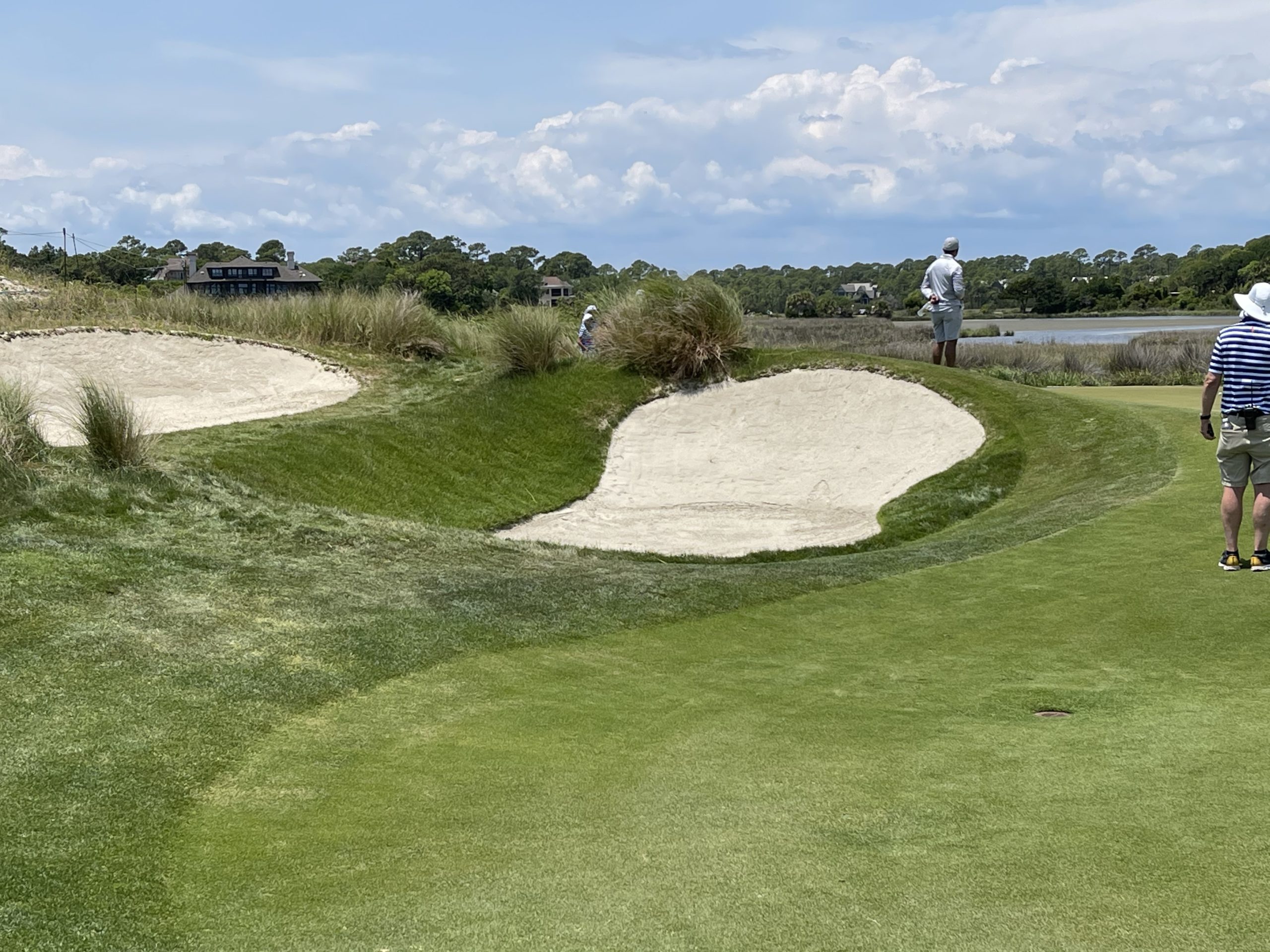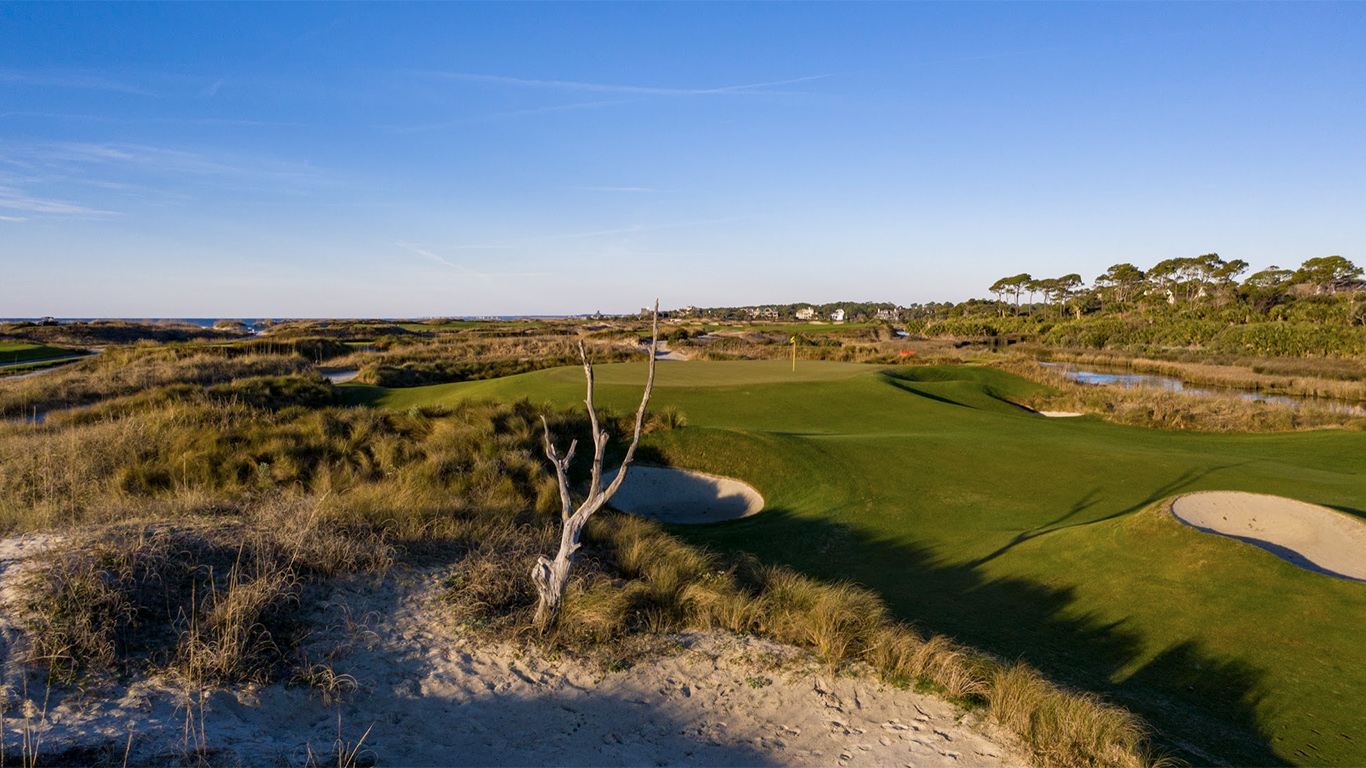It’s been almost two years since I last covered an event in person, so it’s wonderful to be at this year’s PGA Championship. Much of what happens on the ground at a major can’t be understood from the comfort of your home, especially when you’re talking about Kiawah Island. The Ocean Course is one of 2021’s most intriguing tournament venues, and so far it’s living up to my expectations.
Many players and commentators are already talking about the weather conditions, particularly the wind, and deservedly so. The influence of the wind was obvious as soon as I stepped on the course today. Golf’s invisible hazard will undoubtedly turn this difficult Pete Dye design into an immense challenge while also providing day-to-day variety—something we rarely see at U.S. majors.
With that as the overarching theme, here are some other things I noticed on Tuesday at the PGA Championship:
The importance of finding the fairway
A lot will be made of how challenging the Ocean Course is when playing into the wind, but it’s no picnic downwind, either. This will be especially true if players are hitting a lot of approaches from the rough. The Ocean Course’s greens are propped up and firm, requiring controlled iron shots. But with the wind at your back and your ball sitting in a potential flier lie, distance and spin control will become a tall order. So finding fairways and getting to hit approaches from clean lies will be of the utmost importance on the downwind holes.
Player preparation and setup variety
For players, the 2021 PGA Championship has to be one of the most challenging majors to prepare for in recent memory. At venues like Harding Park and Winged Foot, the top competitors understood the task at hand rather quickly, so practice rounds weren’t as important. But given the firm conditions and the forecast for variable wind directions this week, practice rounds at Kiawah Island became invaluable. Players will need to know the course as well as possible because any changes in weather or setup could have a huge effect on their game plans.
Adding to the complexity, Kerry Haigh and the PGA’s setup crew will have a lot of flexibility with tee positions at the Ocean Course. On Tuesday, the closing holes were into the wind, forcing players to take off head covers on numerous approach shots. I don’t remember the last time I saw that on the PGA Tour. Plus, depending on the wind’s ferocity and Haigh’s taste for brutality, there could even be some fairways that shorter players will struggle to reach.
But the main point is that if tees are moved around, players will need to deal with different sight lines and landing areas from day to day. The Ocean Course’s design is all about creating discomfort, and Haigh’s setup could enhance that characteristic.
What’s going on with these mowing lines?
While I’m excited about this week, I do have one complaint for the PGA and Kerry Haigh. The mowing lines at the Ocean Course are inconsistent, especially around the bunkers.
I understand the cause of this inconsistency. Many fairways were tightened for the PGA Championship, so some bunkers got stranded out in the rough, 10 to 20 yards from the short grass. On other holes, however, the fairways run right up to the bunkers. This strikes me as an avoidable mistake. Consistent mowing lines, particularly around bunkers and greens, are vital to a strong course setup. Balls should be bounding into Kiawah’s waste areas, not getting caught in buffers of rough.

Rough surrounds a green-side bunker at the Ocean Course—rough that could save a player from finding a footprint in the sand this week. Photo: Andy Johnson
Speaking of waste areas…
I love the decision to categorize all of the Ocean Course’s bunkers as waste areas. There aren’t many rakes on the course, meaning players could very well end up in footprints in the sand. This brings some teeth and unpredictability back to a type of hazard that has become somewhat docile in the professional game. In many cases, in fact, it’s better to be in a bunker than in the rough. That won’t be the case at this PGA Championship. The waste areas will be on the players’ minds, especially if they’re playing later in the day. Gotta love when a hazard plays like one.
Watch those surrounds
Those who mishit their approaches at Kiawah can find more than waste areas. Many greens have severe slopes that feed balls off the green, and it’s anyone’s guess where those balls will come to rest.
One hole where I expect this kind of drama to play out frequently is the par-5 11th. The green is perched above water on the right and a sudden slope on the left. That slope will propel balls into native grasses, leaving a terrifying pitch from a downhill lie to the elevated green. I’m curious to see how much risk players will take on after a good drive on No. 11.

The treacherous 11th green at the Ocean Course at Kiawah Island. Photo: Andy Johnson
The other defending champion
Much has been made of Rory McIlroy’s defense of his 2012 PGA Championship, the last major played at the Ocean Course, but have we forgotten his former caddie, J.P. Fitzgerald? He was there at Kiawah in 2012, too! It was fun to watch Fitzgerald and his new bag Victor Perez throw balls around and talk about places to miss during Tuesday’s practice round.
Header photo / future meme credit: Brendan Porath


 by
by 
